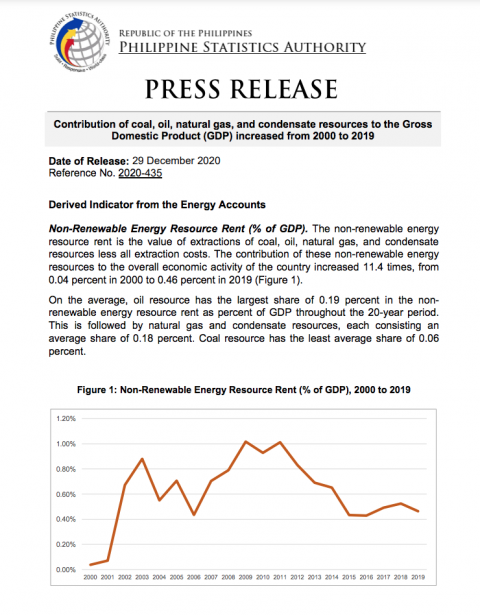Contribution of coal, oil, natural gas, and condensate resources to the Gross Domestic Product (GDP) increased from 2000 to 2019

Document Summary:
The Energy Accounts of the Philippines is a publication that presents the physical and
monetary asset accounts for coal, oil, natural gas, and condensate. This is an update
of the pilot compilation released last January 2019.
The System of Environmental-Economic Accounting (SEEA) 2012–Central
Framework, a multi-purpose framework for measuring the environment and its
interaction with the economy, serves as the framework for this study. It is also a
statistical framework that consists of a comprehensive set of tables and accounts
which guides the compilation of consistent and comparable statistics and indicators
for policymaking, analysis, and research.
The SEEA Central Framework covers measurement in three main areas: (1) the flows
of resources within the economy and between the economy and the environment; (2)
the economic activity and transactions related to the environment; and (3) the stocks
and the changes in stocks of environmental assets, such as energy resources, which
is the main focus of this study.
The accounts provide information on the available stocks of these non-renewable
energy resources at the start and end of each year, as well as the changes that
occurred during the period. These energy resources were also classified following the
United Nations Framework Classification for Fossil Energy and Mineral Resources
(UNFC-2009) as follows: Class A, commercially recoverable resources; Class B,
potentially commercially recoverable resources; and Class C, non-commercial and
other known deposits.
A basic physical asset account for energy resources is compiled by type of resources,
each with the same unit of measurement, and by class of resources.
Link to an External Document:
